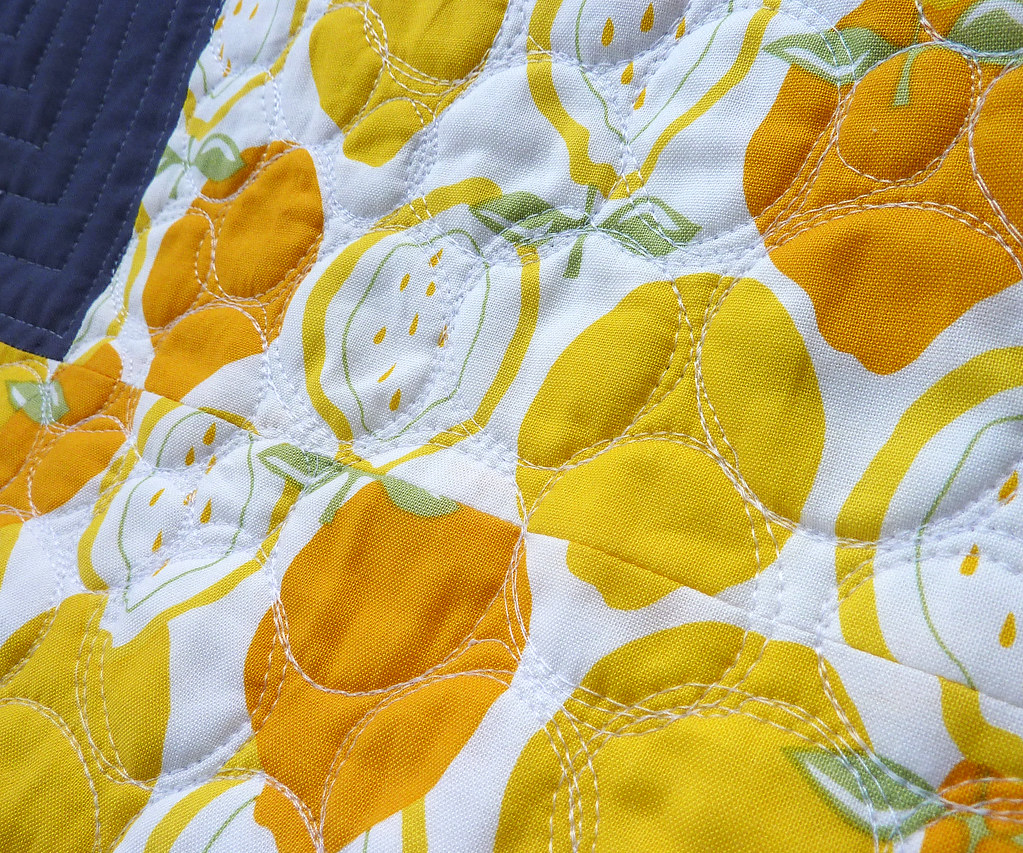And I have a project that is small enough that I won't need 17 bobbins of thread to complete.

But, I may need to revisit the spray baste thing. After much testing I never did find any differences between the Dritz and the 505.
But I'm not so sure I like it as well as I had hoped. The basting part is MUCH more pleasant. And nary a wrinkle or pucker is to be found.
But the quilting - with a spray basted quilt - is not that great. And I LOVE the quilting part. The problem is that the basting makes the quilt a little stiff. And am finding that the quilting process is much more difficult without any drape to your quilt. I have to wrestle it and stop to pull/move as much as if I was stopping to undo a pin.
Maybe I'll try spraying on the back and pinning the front?
.
I have never tried spray basting because I prefer not spending more money on something that is consumable versus the investment I've made in reusable safety pins but I'm so tempted. I hate the basting process with a fiery passion. Thanks for the review. Let us know how it goes with half-and-half..
ReplyDeleteI have started using an iron on bamboo batting. It is the most amazing thing - no pins, no sticky spray and no residue. I'm sure there would be something similar in America - you should give it a try.
ReplyDeleteI dislike the basting part very much. I saw a video on You Tube for hand basting using a herringbone stitch and tatting thread. You roll your quilt top and bottom around plain pieces of board you can get at the lumber store. I find it goes quite fast and is kind of soothing once you get your stitches going. I tried it on a twin size quilt and it worked out okay. Maybe something to consider.
ReplyDeletei totally see the appeal in spray basting, but i think it is probably not as safe for me or the environment as pin basting. I have been using sharon schamber's method of rolling onto boards
ReplyDeletehttp://www.youtube.com/watch?v=bhwNylePFAA
i did a blog post about this.
http://mishasneedle.wordpress.com/fabric-work/basting/
i pin bast now using the board method and it is the best way i have come up with so far. to do it you need 2 1x3xhowever wide your quilt is boards and a work surface that is wider than your quilt. i love this method because i do not have to lay the quilt out on the floor (with a rottweiler puppy and 2 cats this would be impossible) and i am standing the whole time which is way better than having to work on my hands and knees.
So I went over to the evil side and started spray basting. The spray is expensive, but so worth it to me. I never have any puckers, it is faster, and no pins to worry about while I'm quilting. I wonder if you are putting too much spray? I don't find my quilts stiff. And a little spray goes a long way. I think it's most important to spray the edges well. I also find spray basting as the only method that works with knit fabrics like minky.
ReplyDeletehmm, like Laura my first thought was how much are you using if it is is stiff? I use Sulky and find it simmilar to 505 and don't find it is stiff or firm to work with. I have a large table that I am able to work on to smooth and spray and find that a light spray, like less than I would use to spray a cake pan with PAM is all I need.
ReplyDeleteI have been using 505 for years and always suggest my students spray a light coat of spray on the batting only then smooth the quilt or backing down. You should only have enough spray to gently hold your fabric. In fact, you should be able to pull it up and reposition without much trouble with the right amount. Should be no stiffness to the project.
ReplyDelete